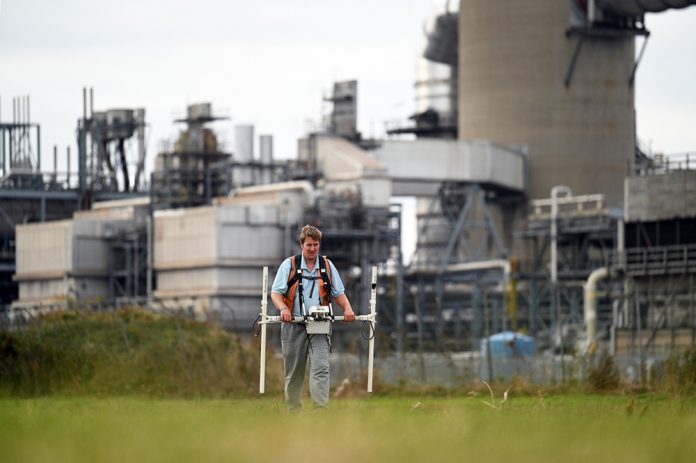…but Iwan Hughes, Director of Regulation & Grid Services at VPI Power, says its full potential is yet to be unlocked.
With extreme weather events impacting many countries across the globe this summer, the impetus to reach net zero has never been more apparent.
Carbon capture, utilisation, and storage (CCUS) applied to combined heat and power stations (CHP) is an essential technology in this fight, which will help to deliver the UK Government’s target of net zero carbon emissions by 2050, provide a more resilient and flexible electricity system, protect critical heavy industries, and enable new energy-intensive green industries to flourish.
Recent announcements from the UK Government have been positive in providing investment clarity and financial support for CCUS deployment in the UK, but there is still work to be done to unlock the full decarbonisation and economic potential of this technology.
As the UK Climate Change Committee recently noted, there is no route to net zero in 2050 without deploying CCUS at scale. CCUS works by capturing carbon emissions at the source and transporting them via a pipeline network to the sea where they are stored in depleted oil and gas fields. Geologically, and as an island nation with a rich industrial history, the UK is uniquely placed for a world-leading CCUS industry.
The UK Government estimates that as a country, we have 78 gigatonnes of potential CO₂ storage capacity, and utilising this fully could create £4-5 billion in gross value add from UK CCUS exports by 2050. In addition to strengthening UK trade power, it will also make us more energy secure by ensuring flexible low carbon electricity generation can be retrofitted and stay online in a net zero world.
CCUS with CHP is also critical to bringing heavily industrialised areas on the net zero journey and creating opportunities for communities where they are based to reap the economic benefits of its deployment, including job protection and creation.
CCUS is essential to areas such as North Lincolnshire and the Humber, where our Immingham Combined Heat and Power plant is located. The Humber region is currently the largest emitting industrial cluster in the UK, generating 12.4 million tonnes of CO₂ annually from power generation and strategically located heavy industry. This is 30 per cent more than the next largest cluster in the UK.
A recent Government announcement has confirmed the pivotal role policy makers see CCUS holding in UK net zero strategy. The Chancellor announced in his Spring Budget that the Government will be providing £20 billion in support for early deployment of CCUS in the UK. This support will be critical in helping to establish two CCUS industrial clusters by the mid-2020s and a further two by 2030. If successful, it is estimated that the ‘Cluster Sequencing Programme’ in the UK will be able to capture 20-30 million tonnes of CO₂ per year.
This month’s recent awarding of ‘Track 2’ status for the Viking CCS Transport and Storage (T&S) network as part of the programme was another positive development. Viking CCS T&S has the potential to store up to 10 million tonnes per year of CO₂ by 2030 and 15 million tonnes of CO₂ per year by 2035. It will also enhance local economic growth and provide highly skilled jobs by unlocking up to £7bn in further investment across the full CO₂ capture, transport, and storage value chain between 2025 and 2035.
The ‘Track 2’ announcement signals strong support from the Government on which clusters it believes are best positioned to deliver this technology and help decarbonise UK industry and energy. These signals are critical to investors and increase confidence in projects and where CCUS will be applied, such as VPI Immingham. In awarding conditional Track 2 status to Viking, the Government has managed to fast-track its due diligence and selection process, whilst also sending strong investment signals to future decarbonisation projects located nearby.
Clearly, 2023 has been a critical year for net zero and CCUS. In an energy system that will require a diverse range of technologies to interact and play their part throughout the transition, CCUS is needed to underpin energy security as well as decarbonise some of the most critical and hardest to abate sectors in the economy. At the same time, the UK can position itself as a leader in new technologies and create job and opportunities throughout the economy.
We support the ambition shown by the UK Government, and policy makers in Whitehall, this year to ensure this critical technology can be delivered faster and utilised to its full potential.
We now call on politicians from all parties to back the timely development and execution of the ‘Track 1’ and ‘Track 2’ CCUS programmes which will unlock the significant economic benefits the CCUS economy has to offer, protect the future of existing industries across the country, and help achieve the 20 million tonnes per year of CO₂ that needs to be captured to hit the UK Government’s minimum stated target by 2030.
VPI is one of the leading Combined Cycle Gas Turbine (CCGT) operators in the UK across five locations, generating enough power for around 3 million homes.
Its CCS transport and storage (T&S) network was recently awarded Track 2 status for its Carbon Capture, Utilisation and Storage (CCUS) Cluster Sequencing Programme. This is seen as a very encouraging development for the decarbonisation of the Humber region – the UK’s most industrialised area – and the unlocking of up to £7bn in investment across the full value chain by 2035.
As part of the “Humber Zero” anchor projects, VPI will connect to the Viking CO₂ storage network to remove up to 8 million tonnes annually of CO₂ at source and store safety under the North Sea.



